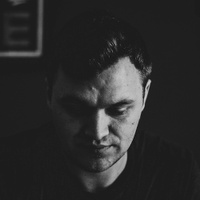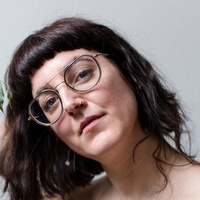As told to Max Freedman, 2496 words.
Tags: Design, Writing, Identity, Politics, Process, Money, Collaboration, Business, Focus.
On merging your beliefs and your work
Designer and writer Craig Oldham discusses finding the motivating factor in your creativity, prioritizing your politics and creativity simultaneously, and the freedom of collaborating with other creators.I’m curious what inspired your Shining book. You’re taking such a design-heavy approach to exploring the movie.
I’ve always had a fascination with things that don’t exist. I know that sounds quite strange, but I was always fascinated by these fictional books that become totemic in stories and become catalysts within films. I thought it might be nice to bring these things that don’t exist to life. For example, John Carpenter’s They Live, where he picks up a book, and it’s a realization in the narrative that things aren’t what they seem. I thought it was really interesting that books could do a thing like that.
The more I thought about that, the more I started noticing these things in the films. The Shining was definitely one of them where, throughout the film, Jack’s doing his thing, Danny’s circling the hotel on his truck, and it’s not until Wendy comes across his manuscript and starts flicking through it that she starts to put all that together and realize that things are unraveling. That’s when the whole film starts to change its pace. The Shining was on the list of a few of these films that I’d seen and thought, “I’d really love to create those things as objects,” and then build a critique or a reading or multiple views on this film as a study disguised as a replica from the film itself.
I wanted these things to look like replicas. All the visual information comes from the film. And you only see around 16 pages of this manuscript as Wendy’s flicking through it quite frantically. We used that as a bit of artistic license to extrapolate how the book would look.
It’s all looseleaf. It’s all contained in a box, just like Jack’s manuscript. Right down to any detail we could, we tried to stay true to how that prop would’ve been made and replicate it the best we could. That was the approach and concept to it as a mechanism to house the content.
Clearly, you’re deeply fascinated by these films – putting together a whole publication to bring that into a tangible form seems like a labor of love. How does your approach to designing and branding a passion project compare to how you approach design and branding at Office of Craig?
They’re very similar. Even though a lot of people would argue that I work in a visual discipline, I don’t approach it from a visual starting point. I always approach it from an intellectual one, and my whole process is, “What am I trying to achieve? And what is the best way I can achieve that creatively?” I use design thinking as a way to try and solve that problem.
The question or the problem could be, “How do I engage people, or reengage people, with a film that so many people have seen and so much has been written about?” Or it could be, “How do I sell more of these things for this client? How do I rebrand this client?” We try and get down to what the actual problem is and then use creativity to figure out what might be the best way to solve that.
There are real labors of love in every project. You’ve got to find something interesting in any project you do. As a creative person, you’ve got to be invested in something. That one thing could be, you need to get paid, because your rent’s got to be paid. It could be that you’ve never done that kind of project before. It could be that you love doing those projects and you want to do more of them, but you have to identify one thing that you can invest in. And that’s how your work matters to you. But I think you give a bit of yourself over to your projects then, and people can identify with that when they see it.
I would argue that I take that approach with every kind of work we do, because I wouldn’t do the work if it meant nothing to me. Maybe it’s a feeling of mine as a commercial practitioner, but I just can’t do work if I don’t care about it, and I can’t do work if I can’t find something to care about in it or find something interesting about it that has value to me or makes me think, “I really want to share that with people. I really want to communicate that more, because I don’t think people know about it.” Whatever that thing is, you have to hold onto it. That’s been a real core of my practice.
Talking about needing to work with things you care about made me think of your recent article about reckoning with [the influential but controversial designer and sculptor] Eric Gill’s history of sexual abuse. That article made me want to hear more about your creative and political philosophies, and what you just said sounds like that.
They are one and the same thing. I’d be an absolute hypocrite if I stood up and said one thing and then worked on something else that was conflicting or flew in the face of that.
I don’t have a black and white view of the world. I think people’s experiences are complex, interesting, and worthy of debate and discussion. But I am politically driven. I do have certain belief systems and principles, creative and personal, but a big shame that I feel about the creative industries is that people feel that they can’t be commercially active creative practitioners, stand up for what they believe in, stand up for what they care about, and stand against things as well as for things. I think that’s a real shame, because creativity is such a powerful thing. If you use it in the right way, or if you use it to have a debate in the right kind of structured manner, it can be really powerful.
You don’t have to just be creative through your work. You can be creative through your opinions. You can be creative through your actions. All of those things, to me, are creative gestures. It’s not always about making things. It can be everything you have as a person. It can be put together in certain ways to make creative things. That’s what creativity’s about. You find the best way to say what you need to say or communicate what you need to communicate to an audience.
This makes me wonder, how did you first get to a point where you were able to make a living off design? And how often have you had to reckon with, “I need to make rent, but this project may not be a perfect fit for my politics or vision”?
When I graduated from college, I worked in three agencies. I tried small ones, I tried big ones, and I tried in-house ones to figure out which one was right for me. In doing that, you don’t really have the power to say, “I don’t want to do this. I don’t believe in that.” So when it came to setting up my own practice, it wasn’t just about, “I’m going to be in business to make money.” It was more about, “There’s a realistic thing there. I’ve got to make rent. I’ve got to eat. I’ve got to clothe my daughter now. I’ve also got staff. I’ve got to pay for their mortgages and their life and support what they want to do.” But you can do that and still add to the world rather than take away from it, and you can still do meaningful work.
That mindset has led the direction of the business. I’ve never been in many positions where I’ve had to turn down work because I didn’t believe in it, due to being so outwardly open about my political beliefs or what we stand for, what kind of work we want to do. I think we deter people that don’t believe in that as much as we attract people that do.
I don’t understand why a lot of design agencies are afraid to have those conversations. For me, it’s only ever worked in a positive way, because I wouldn’t want people that I wouldn’t want to work for coming to me saying, “We’d love for you to do this.” I set my views out really clearly and concisely and say, “This is the kind of work we want to do, who we do it with, and what kind of work we want to do.” We do that by being flexible, by having multiple income streams. We teach a lot, we write a lot, we publish a lot, but we also do the kind of commercial work we do.
Instead of looking for those cash cow clients that are big multinationals, I’d rather work with 10 small independent people and build up the kind of resources we need rather than one massive money-making thing that just pays for everybody’s bills and then try and scramble around for other stuff around that, which I’ve seen and experienced firsthand with other agencies and I just don’t like. I don’t think it works. We try and work with cultural people or people that want to do stuff or have a clear sensibility about what they’re doing, and we work with them to help them achieve it.
You mentioned the Office of Craig staff once or twice. I was wondering how you manage Office of Craig and how collaboration factors into working with your staff.
It’s my name, so I forgive people for thinking it’s me and that I’m the call-on at the top and I just farm all my work down, that I have the idea and then make all the people act on it. That’s not how I run it at all. I’ve been at the bottom end of that triangle, and it’s not enjoyable. And in my experience, young people coming into the creative industries have all the energy. They’re so enthusiastic, and they have a desire and an energy about them. They’re so dynamic, and that’s where I want to work. That’s the kind of stuff I want in my studios.
I’m bored of my ideas. Sure, I have things I want to do. But on a day-to-day basis, I get much more of a kick out of seeing other people’s ideas, hearing other people’s points of view, and seeing how my experience can help them achieve what they want with their career and do the best work they can. My studio is built on an educational residency model where I take on a graduate for a two- to three-year residency where they just work as a designer. They’re exposed to everything from a really young age, and they learn at a kind of geometric rate where it’s brilliant. I get to utilize and harness all that energy, desire, and love. That goes directly into the projects, and [the designers] get to do things they wouldn’t be doing in a usual agency structure because they hadn’t paid the bill of 10 years doing what someone else told them to do.
Underwriting all of that is a belief that I will never let go of and that I think a lot of people forget sometimes: I wouldn’t be able to do the things I do without people working with me. I owe them something back in return. It’s an exchange. The whole way we’re set up is an exchange, because without my designers learning and bringing that energy and doing the kind of jobs that we bring in, I wouldn’t be able to do a book on The Shining and take time to make sure that’s the best project it can be. They give, and they take, and I give and I take as well.
My other fundamental principle is that I would never dream of asking anyone to do something that I wouldn’t be prepared to do myself. That’s the first thing I say to them when they come so they know we’re all in the same boat, we’re all doing the same thing, and I will help them when they need, and they can help me if they can. It has its ups and downs, and it has its drawbacks, but ultimately, it feels like a really worthwhile model for us and for me, and it works for the small team that we have.
It’s clear that you’re only working with clients that you believe in and share values with, but I imagine shared values don’t always translate to good ideas for projects. How do you figure out how to say yes or no to a client, even if they share your beliefs and do great things?
Well, first of all, sometimes we do work with people who don’t directly share our beliefs. I mean, they might in the grand scheme of things. Let’s say they’re politically left-aligned and believe in doing good, for example. They might believe in that, but the means of how to achieve that, we might disagree on.
There might be disagreements, there might be falling out, or there might be things that just don’t quite sit right. I always broach those things quite directly and try to have a conversation about them. I consider myself quite open-minded as a creative person. I feel that anybody’s life is enriched by seeing it from someone else’s point of view. I would never go into a project trying to enforce my taste onto it, but I would discuss these things. I would say, “Why do they feel that way? Why do they feel so strongly about a certain point?”
If there is some rationale there and if I can understand the context of why they want to go ahead with a certain thing in a certain way, then maybe I can understand that and get on board with it. Or maybe I can understand that and challenge it better. It just always has to be an open, transparent process. I think if you haven’t got that and you’re not getting what you want out of it, then it’s fundamentally not going to work. If I feel that we’re not going in the right way or some flags have been raised, then we can all have those discussions. But ultimately, we try to explain our side of things, and all we ask in return is that they explain their processes so that we can all find a way through it together.
Craig Oldham Recommends:
You’d be surprised what happens if you only ask.
Archives aren’t dead things, but rather living and full of ideas.
Everything is always connected to everything else.
You don’t have to like something to be engaged by it.
There’s always a way.




